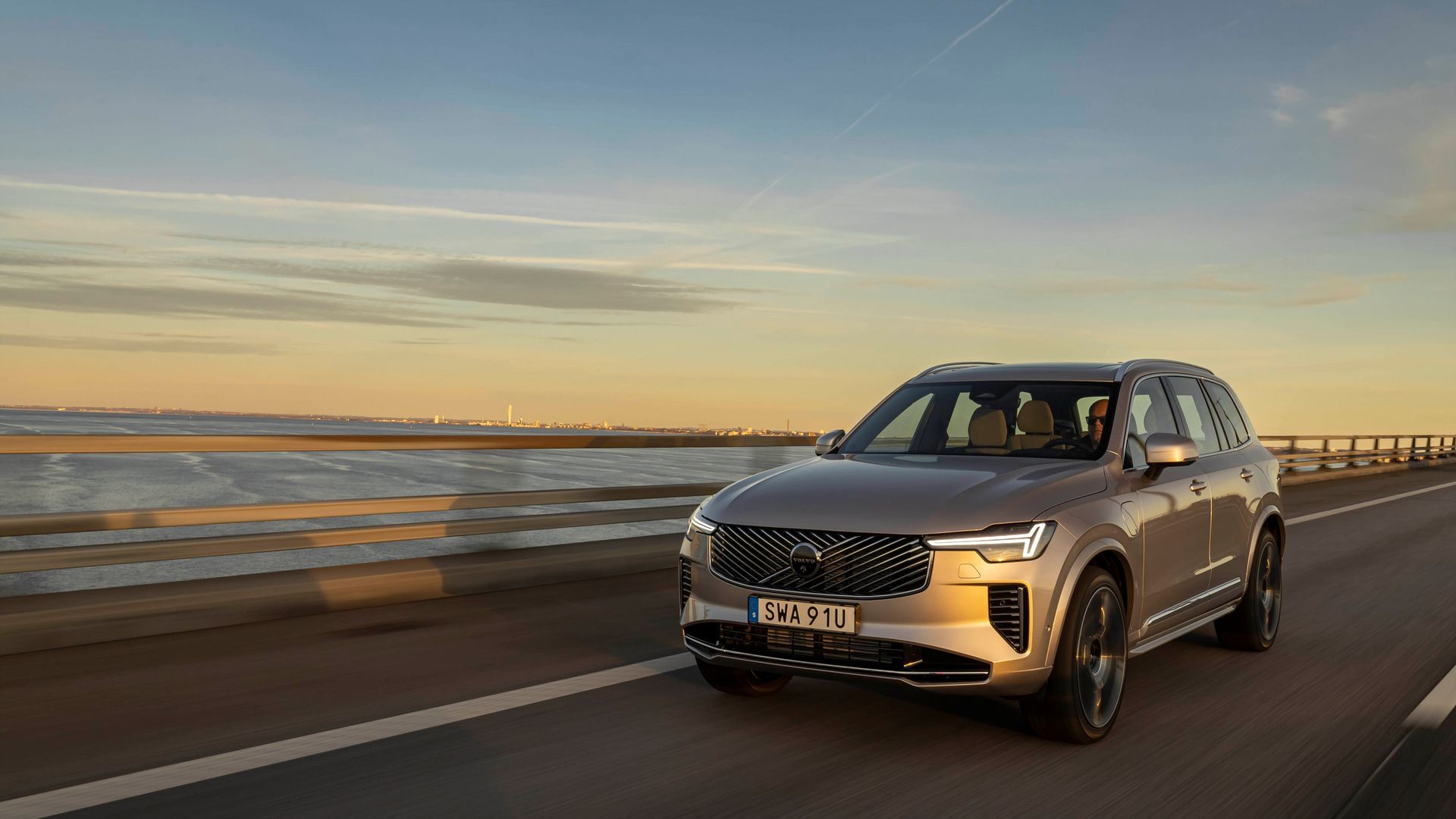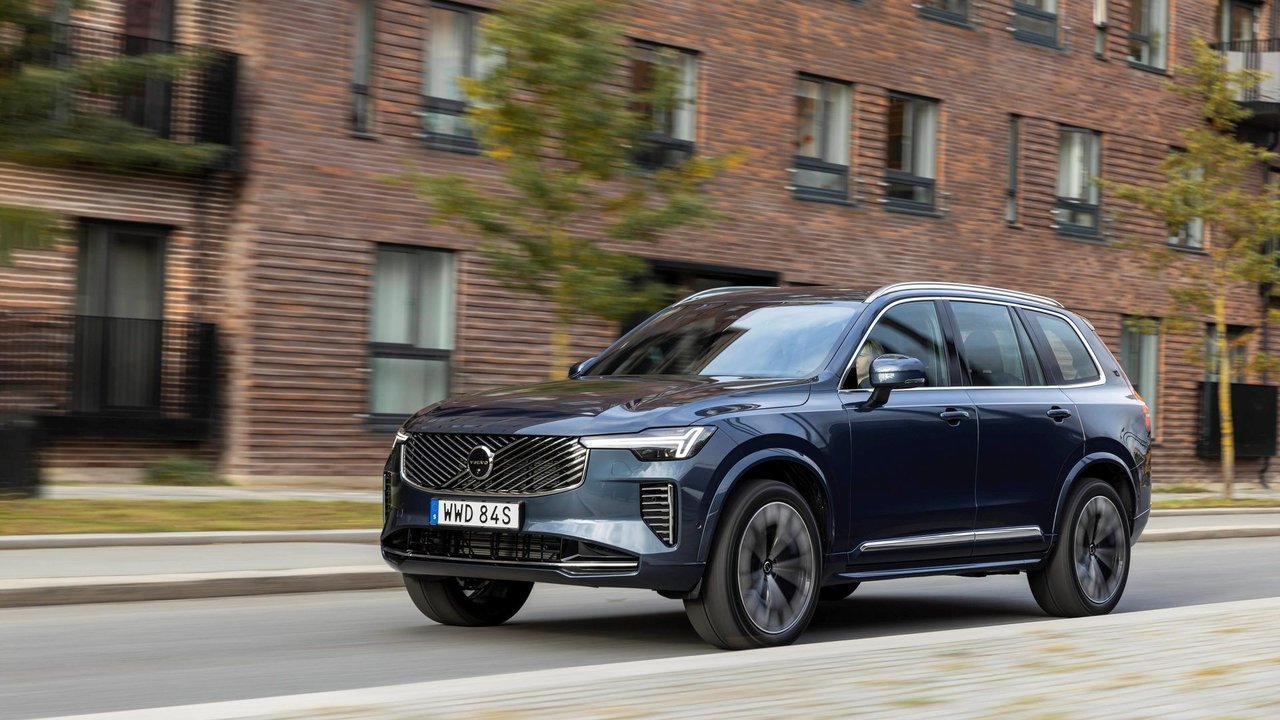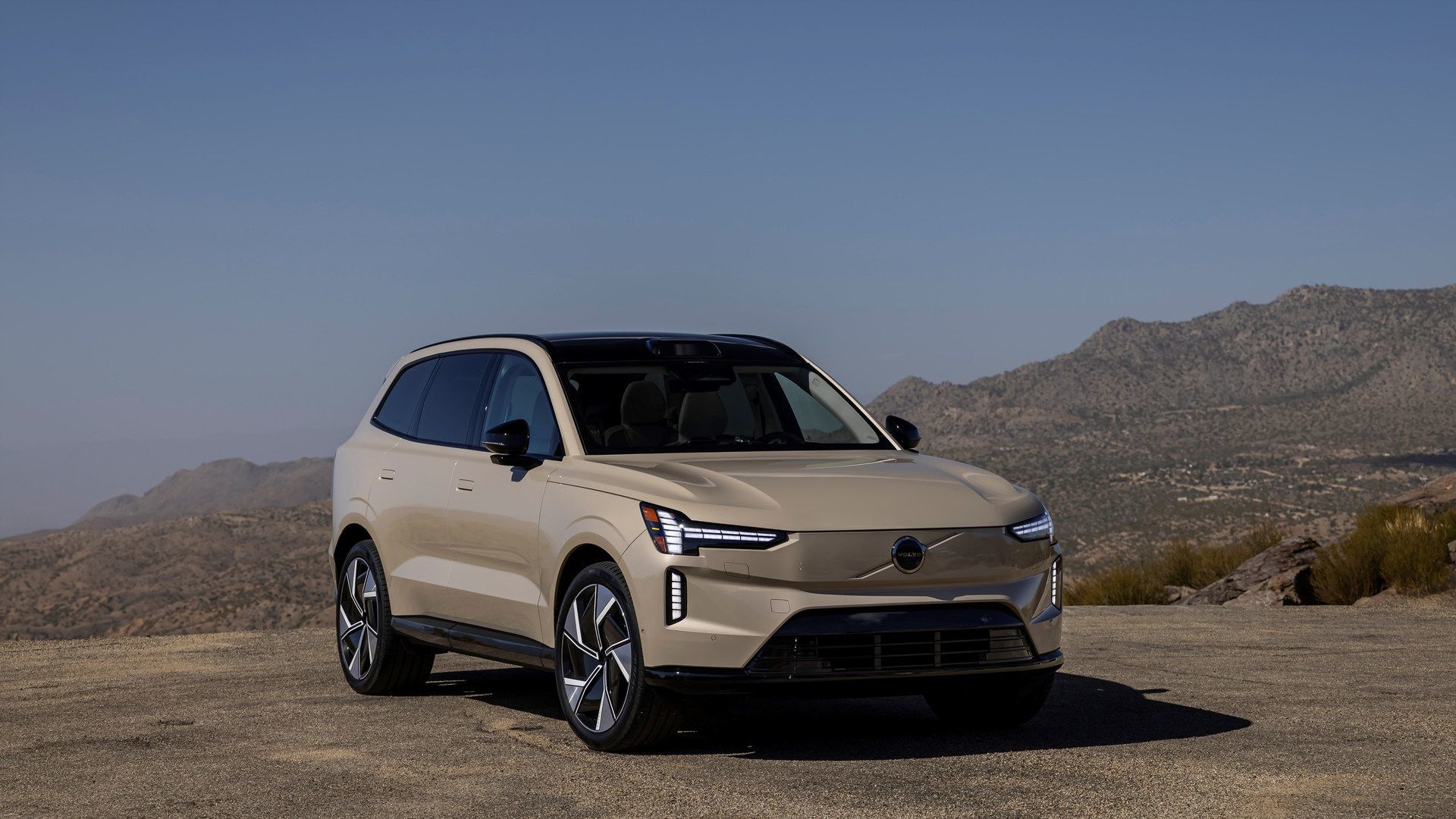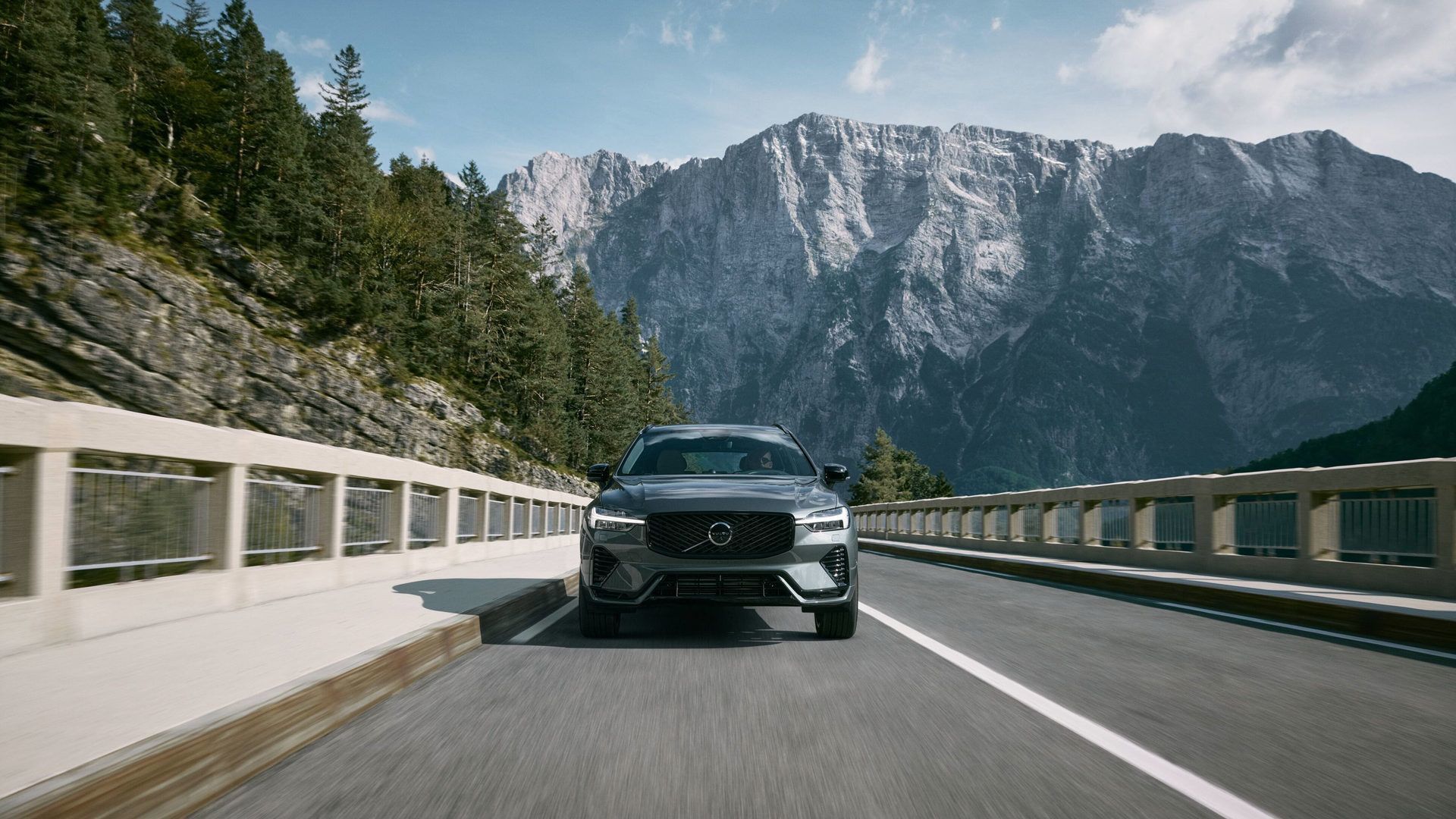
What Mississauga Drivers Should Know Before Buying a Plug-In Hybrid
Plug-in hybrid vehicles occupy a unique space in today's automotive landscape. They provide electric driving for your daily commute while...
Read moreVolvo Cars Mississauga

Hybrid technology has evolved beyond plug-in systems requiring charging infrastructure. Mild-hybrid systems represent an intermediate approach that improves fuel efficiency through automatic energy recovery and electric assistance, all without requiring drivers to plug in or modify their refueling habits.
The Volvo XC90 B6 employs mild-hybrid technology that operates transparently in the background, recovering energy during braking and using it to assist the gasoline engine during acceleration. This system delivers 295 horsepower while achieving 10.4 L/100 km combined fuel economy—approximately 15% better than conventional engines of similar output. For Mississauga families seeking seven-passenger luxury with improved efficiency but uncertain about plug-in hybrid charging requirements, the XC90 B6 provides measurable fuel savings without operational complexity.
What Defines a Mild-Hybrid System
Mild-hybrid systems use electric motors to assist the gasoline engine but cannot propel the vehicle on electric power alone. This distinguishes them from plug-in hybrids like the XC90 T8, which can drive purely on electricity for significant distances, and full hybrids that seamlessly switch between electric and gasoline propulsion.
The XC90 B6's mild-hybrid system consists of three primary components:
Integrated Starter Generator (ISG) replaces the conventional alternator and starter motor with a single electric motor mounted directly to the engine's crankshaft. This motor serves dual purposes—it starts the engine smoothly and silently when needed, and it recovers energy during braking and coasting by acting as a generator.
48-volt battery stores recovered electrical energy. This higher voltage compared to conventional 12-volt automotive electrical systems allows more powerful electric assistance with less current draw, reducing heat generation and improving efficiency. The 48-volt battery is compact, adding minimal weight while providing sufficient capacity for the system's functions.
Power electronics manage energy flow between the ISG, battery, and vehicle electrical systems. These control units decide when to recover energy, when to provide electric assistance, and how to distribute power to various vehicle systems.
The system operates automatically without driver input or mode selection. There are no buttons to press, no charging cables to connect, and no range displays to monitor. The mild-hybrid technology functions transparently, improving efficiency during normal driving without requiring any behavioral changes.
How Energy Recovery Functions During Braking
Energy recovery, also called regenerative braking, captures kinetic energy that would otherwise be wasted as heat through conventional friction brakes. When the driver lifts off the accelerator or applies the brakes, the ISG reverses its function and operates as a generator.
As the vehicle slows, the ISG applies resistance to the engine's crankshaft, converting the vehicle's forward momentum into electrical energy. This energy flows into the 48-volt battery for storage. The electrical resistance created by the generator contributes to vehicle deceleration, reducing the amount of friction braking required from the conventional brake pads and rotors.
The system continuously monitors multiple factors to optimize energy recovery:
Vehicle speed determines how much energy is available to recover. Higher speeds provide more kinetic energy to capture. The system maximizes recovery when slowing from highway speeds while moderating recovery during low-speed urban driving.
Battery state of charge influences recovery intensity. When the battery is partially depleted, the system recovers energy more aggressively. When the battery approaches full charge, recovery reduces to prevent overcharging.
Braking force requested by the driver affects recovery operation. Light braking or simple coasting allows the system to handle most deceleration through regenerative resistance. Harder braking requires conventional friction brakes to supplement the ISG's capacity.
Road grade factors into recovery calculations. When descending hills, the system can recover substantial energy from gravity-assisted deceleration, essentially harvesting energy from elevation loss.
This recovered energy is stored in the 48-volt battery, ready to assist the gasoline engine during subsequent acceleration. The cycle repeats continuously—recovery during braking, assistance during acceleration—throughout every drive.
Electric Assistance During Acceleration
The stored electrical energy provides meaningful assistance when accelerating or maintaining speed, particularly during the initial moments of acceleration when engines typically consume the most fuel.
When the driver presses the accelerator, the ISG provides immediate electric boost to the gasoline engine. The ISG produces 13 horsepower at 3,300 rpm and 40 Nm of torque, which supplements the turbocharged and supercharged 2.0-litre engine's output.
This assistance is most beneficial during several specific scenarios:
Initial acceleration from stops requires substantial energy to overcome inertia. The ISG's instant torque delivery helps the vehicle begin moving with less demand on the gasoline engine. This reduces fuel consumption during the most energy-intensive portion of acceleration.
Turbocharger lag elimination addresses a characteristic of turbocharged engines. Turbochargers require time to build boost pressure after the throttle opens. During this brief lag, the ISG provides immediate power, filling the gap until the turbocharger reaches operating pressure. This creates smoother, more responsive acceleration.
Maintaining highway speed on level ground requires moderate but continuous power. The ISG can provide small amounts of assistance that reduce the load on the gasoline engine, improving fuel efficiency during sustained cruising—common on Highway 401 or 403 between Mississauga and surrounding areas.
Climbing grades demands additional power to overcome gravity. The ISG contributes its output to help maintain speed without requiring the engine to work at higher rpm, which would consume more fuel.
The assistance occurs seamlessly, with no noticeable transition or operational difference from the driver's perspective. The accelerator pedal responds as expected, but behind the scenes, the mild-hybrid system is optimizing the blend of gasoline and electric power for efficiency.
Comparing Powertrain Technologies
|
Feature |
Mild-Hybrid (XC90 B6) |
Plug-in Hybrid (XC90 T8) |
Conventional Gasoline |
|---|---|---|---|
|
Electric-Only Driving |
No |
Yes (53 km) |
No |
|
Requires Charging |
No |
Optional (maximizes efficiency) |
No |
|
Fuel Economy (Combined) |
10.4 L/100 km |
8.9 L/100 km (hybrid mode) |
11.5-12.5 L/100 km (estimated) |
|
Total Power Output |
295 hp |
455 hp |
250-295 hp (typical) |
|
System Complexity |
Low |
High |
Lowest |
|
Additional Weight |
~30 kg |
~230 kg |
Baseline |
|
Efficiency Improvement |
~15% vs conventional |
~40% vs conventional (with charging) |
Baseline |
Real-World Fuel Efficiency Gains
The XC90 B6's 10.4 L/100 km combined fuel economy represents meaningful improvement over conventional gasoline engines producing similar power. To contextualize these savings:
Annual fuel consumption for a driver covering 20,000 kilometres would total approximately 2,080 litres with the XC90 B6. A comparable conventional engine averaging 12.0 L/100 km would consume 2,400 litres—a difference of 320 litres annually.
Annual fuel cost savings at $1.70 per litre would reach approximately $544 compared to the less efficient conventional engine. Over a typical 5-year ownership period, this represents $2,720 in saved fuel costs.
Carbon emissions reduction follows fuel consumption. Burning less gasoline produces proportionally less CO₂. The 320-litre annual reduction translates to approximately 755 kg less CO₂ emitted yearly.
These figures assume mixed driving conditions typical for Mississauga residents—urban commuting, highway travel, and suburban errands. Actual results vary based on individual driving patterns, route characteristics, and seasonal conditions.
Highway-heavy driving typically shows the smallest efficiency advantage, as steady-state cruising provides fewer opportunities for energy recovery. Urban driving with frequent stops maximizes regenerative braking benefits, showing the largest fuel economy improvements over conventional engines.
Operational Transparency and Driver Experience
One of the mild-hybrid system's primary advantages is its complete operational transparency. Drivers accustomed to conventional gasoline vehicles will notice no operational differences:
Starting the engine occurs with a simple button press. The ISG cranks the engine smoothly and quickly, without the characteristic grinding sound of conventional starter motors. The start process is quieter and faster.
Stop-start functionality operates automatically at traffic lights and in stop-and-go traffic. When the vehicle comes to a complete stop, the engine shuts off to eliminate idling fuel consumption. As soon as the brake pedal is released, the ISG restarts the engine instantly. The restart is so smooth and quick that many drivers don't consciously notice it occurring.
No range anxiety exists because the system doesn't rely on limited battery capacity. The vehicle operates identically whether the 48-volt battery is fully charged or depleted. The gasoline engine always provides full power regardless of the mild-hybrid system's state.
No charging required eliminates the need for charging infrastructure, home electrical upgrades, or route planning around charger locations. The vehicle refuels at standard gas stations exactly like conventional vehicles.
No special maintenance is required for the mild-hybrid components. The system operates for the vehicle's lifetime without requiring battery replacement or specialized service beyond normal vehicle maintenance.
Technical Implementation in the XC90 B6
The XC90 B6 pairs its mild-hybrid system with a sophisticated gasoline engine. The 2.0-litre 4-cylinder features both turbocharging and supercharging—a combination that provides strong power delivery across the entire rpm range.
Supercharger provides instant boost at low engine speeds. Unlike turbochargers that require exhaust flow to spin up, the supercharger is mechanically driven by the engine and responds immediately to throttle input. This eliminates low-end lag and provides strong low-rpm torque.
Turbocharger takes over at higher engine speeds where exhaust flow is sufficient to drive it efficiently. The turbo provides greater boost pressure than the supercharger at high rpm, maximizing peak power output.
The combination of both systems creates a broad, flat torque curve. The engine produces 310 lb-ft of torque from 2,100 to 4,800 rpm—a wide powerband that provides strong acceleration regardless of current engine speed or gear selection.
The ISG integrates with this engine package, adding its electric assistance throughout the operating range. The result is responsive, powerful acceleration with efficiency that belies the engine's substantial output.
All power routes through an 8-speed automatic transmission to a full-time all-wheel-drive system. The transmission is calibrated to work with the mild-hybrid system, coordinating shift points with electric assistance for smooth power delivery.
Winter Performance and Seasonal Considerations
Ontario's climate presents specific challenges that affect all vehicles, including mild-hybrid systems. Cold temperatures reduce battery efficiency and increase energy demands for cabin heating.
The 48-volt battery's chemistry operates less efficiently in extreme cold. At -20°C, the battery's capacity to store and deliver energy decreases. However, because the mild-hybrid system supplements rather than replaces the gasoline engine, this reduced efficiency has minimal impact on vehicle operation.
The gasoline engine provides all necessary heating for the cabin through waste heat recovery—the same method used in conventional vehicles. Unlike plug-in hybrids or pure electric vehicles that must use battery power for heating, the XC90 B6's heating system doesn't draw from the 48-volt battery, preserving its capacity for propulsion assistance.
Cold-weather fuel economy typically decreases 10-15% compared to moderate temperatures. This reduction affects all vehicles and results from factors including increased aerodynamic drag from denser cold air, higher rolling resistance from cold tires, extended engine warm-up periods, and increased energy demands for heating.
The mild-hybrid system continues operating throughout winter, though its efficiency gains may be slightly reduced. Energy recovery still functions during braking, and electric assistance still supplements acceleration. The fundamental fuel economy advantage over conventional engines persists year-round.
Maintenance and Longevity Considerations
The mild-hybrid system is designed for maintenance-free operation throughout the vehicle's lifetime. The components are robust and don't require scheduled service beyond the vehicle's normal maintenance intervals.
48-volt battery uses lithium-ion chemistry selected for longevity and stability. The battery management system carefully monitors voltage, temperature, and charge cycles to prevent conditions that accelerate degradation. Under normal operation, the battery should last the vehicle's lifetime without replacement.
Integrated Starter Generator contains no brushes or wearing contacts. The electrical connection to the rotor uses solid-state electronics that don't degrade with use. The ISG's mechanical components are engineered for hundreds of thousands of start cycles and continuous operation.
Conventional maintenance proceeds unchanged. Oil changes, filter replacements, brake service, and other routine maintenance follow Volvo's standard schedule. The mild-hybrid system doesn't add any additional service requirements.
Warranty coverage includes the mild-hybrid components under Volvo's comprehensive vehicle warranty, providing assurance about long-term durability and reliability.
Seven-Passenger Capability and Interior Space
The XC90 B6's mild-hybrid system adds minimal weight and requires no cargo space compromise. The compact 48-volt battery and ISG integrate into existing vehicle structure without affecting passenger or cargo capacity.
Seven-passenger seating provides three rows with adequate space for adults in the first two rows and children or smaller adults in the third row. The second row offers 940 mm of legroom in the seven-seat configuration, while the third row provides 811 mm.
Cargo capacity reaches 356 litres behind the third row with all seats in use—sufficient for several carry-on bags or weekly groceries. Folding the third row expands space to 1,007 litres. Folding both second and third rows creates 1,856 litres of maximum cargo volume with a flat load floor.
Unlike plug-in hybrid models where the battery intrudes into cargo space, the mild-hybrid system's minimal components preserve full cargo capacity. The XC90 B6 offers identical interior dimensions to conventional gasoline models.
Towing capacity reaches 900 kg when properly equipped, sufficient for small utility trailers, lightweight camping trailers, or boat trailers. The mild-hybrid system doesn't limit towing capability.
Who Benefits Most from Mild-Hybrid Technology
Mild-hybrid systems appeal to specific buyer priorities:
Efficiency-conscious buyers who want better fuel economy but aren't ready for plug-in hybrid complexity benefit from the automatic efficiency improvements without operational changes.
High-mileage drivers who cover substantial annual distances see the greatest absolute fuel cost savings. The per-kilometre savings multiply across thousands of kilometres annually.
Urban and suburban drivers whose routes involve frequent stops maximize regenerative braking benefits. Stop-and-go traffic patterns provide the most opportunities for energy recovery.
Buyers avoiding charging infrastructure who lack home charging capability or who are uncertain about charging availability appreciate the mild-hybrid's independence from electrical infrastructure.
Traditional vehicle preference buyers who want to maintain conventional vehicle operation while gaining efficiency improvements find mild-hybrid technology unobtrusive and familiar.
Comparing XC90 B6 to XC90 T8 Plug-in Hybrid
Volvo offers both mild-hybrid (B6) and plug-in hybrid (T8) options in the XC90 lineup. Understanding the differences helps determine which suits specific needs:
XC90 B6 Mild-Hybrid provides moderate efficiency improvement (~15% vs conventional) without requiring charging. It offers 295 hp, operates transparently like a conventional vehicle, and adds minimal weight or complexity.
XC90 T8 Plug-in Hybrid provides substantial efficiency improvement (~40% vs conventional when regularly charged) through 53 km of electric-only range. It offers 455 hp, requires regular charging for maximum benefit, and adds significant weight and complexity.
The choice depends on driving patterns and priorities. Those with daily routes under 53 km and home charging access benefit most from the T8. Those with longer daily routes, no charging access, or preference for operational simplicity benefit from the B6.
Both systems coexist in the lineup, providing options for different buyer needs rather than requiring all customers to choose the same technology.
Environmental Impact and Sustainability
The XC90 B6's improved fuel efficiency translates directly to reduced environmental impact. Burning less gasoline produces proportionally less carbon dioxide and other emissions.
The 15% fuel economy improvement over conventional engines of similar output represents a meaningful emissions reduction. While less dramatic than plug-in hybrids or electric vehicles, mild-hybrid technology provides environmental benefits without requiring charging infrastructure or behavioral changes that limit adoption.
The system's simplicity also affects lifecycle environmental impact. The small 48-volt battery requires minimal raw materials compared to large plug-in hybrid or electric vehicle batteries. Manufacturing and recycling impacts are correspondingly smaller.
For buyers seeking to reduce environmental footprint while maintaining conventional vehicle operation and flexibility, mild-hybrid technology provides a practical middle path between unchanged gasoline operation and full electrification.
Discover the XC90 B6 Mild-Hybrid at Volvo Cars Mississauga
The Volvo XC90 B6 mild-hybrid system delivers measurable fuel efficiency improvements through automatic energy recovery and electric assistance, all without requiring charging infrastructure or operational changes. With 295 horsepower, seven-passenger seating, and 10.4 L/100 km combined fuel economy, the XC90 B6 provides premium family transportation with efficiency gains built transparently into the driving experience.
Visit our team at Volvo Cars Mississauga in Mississauga to learn more about how mild-hybrid technology functions and to experience the XC90 B6's refined performance across diverse Ontario driving conditions.

What Mississauga Drivers Should Know Before Buying a Plug-In Hybrid
Plug-in hybrid vehicles occupy a unique space in today's automotive landscape. They provide electric driving for your daily commute while...
Read more
2025 Volvo EX90: Understanding Trim Levels and Features
Volvo's flagship electric SUV arrives with two distinct trim configurations. The 2025 EX90 Twin Motor Plus establishes the baseline equipment...
Read more
5 Safety Features That Make 2026 Volvo SUVs Stand Out in Ontario
Safety has been Volvo's calling card since the company invented the three-point seatbelt in 1959 and made the patent freely available to the entire...
Read more